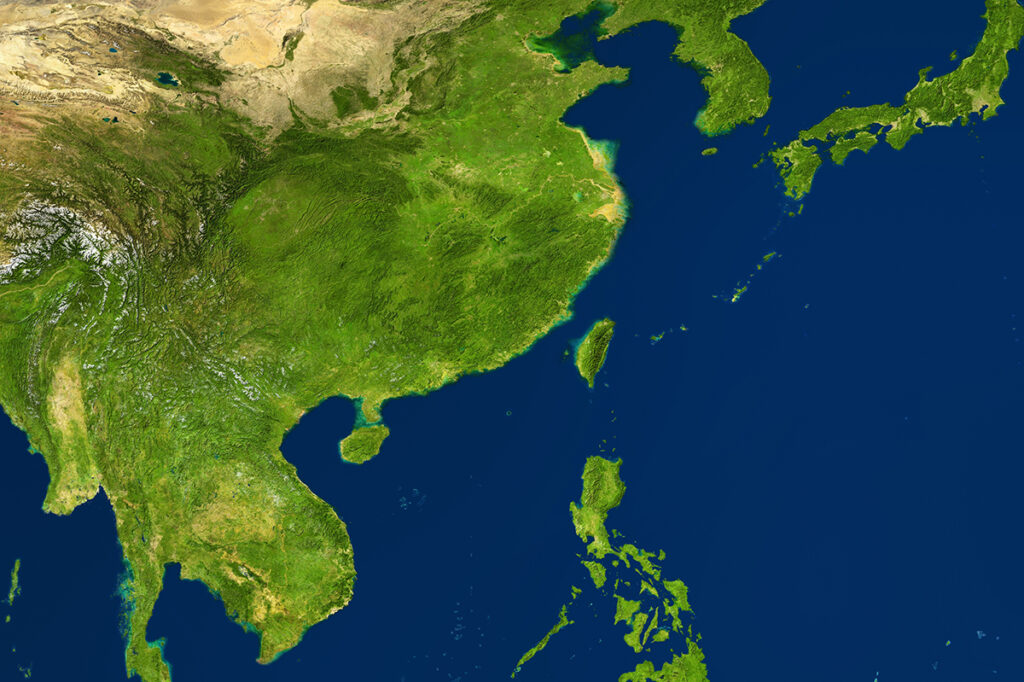In a display of solidarity against perceived Chinese military aggression, the United States, Japan, and South Korea recently conducted joint military drills in the disputed East China Sea. The exercises, led by a U.S. carrier strike group headed by the USS Theodore Roosevelt, aimed to enhance cooperation and readiness among the three nations.
The two-day drills included a variety of activities, such as undersea warfare exercises, maritime interdiction operations, and search and rescue drills. The participating nations also focused on improving communication and data sharing capabilities to better prepare for potential crises in the region.
The drills saw the deployment of F/A-18E Super Hornet combat jets and anti-submarine MH-60R Seahawk helicopters from the USS Theodore Roosevelt’s flight deck. The exercises were observed by journalists who were flown to the area from Kadena Air Base in Japan, highlighting the strategic importance of the region.
While the military maneuvers were underway, U.S. President Joe Biden held talks with Japanese Prime Minister Fumio Kishida and Philippine President Ferdinand Marcos Jr. at the White House. The meetings underscored the importance of security cooperation among the three allies in the face of China’s increasing assertiveness in the region.
China, on the other hand, expressed dissatisfaction with Japan’s actions during Prime Minister Kishida’s visit to the U.S., accusing Japan and the U.S. of undermining regional peace and stability. Beijing defended its activities in the South China Sea, calling them justified and lawful, and criticized the U.S. for its military presence in the region.
The joint drills also signaled improving ties between Japan and South Korea, two nations with a history of strained relations due to Japan’s colonization of the Korean Peninsula. Despite recent political changes in South Korea, experts believe that ties between the two countries will remain stable, with both nations recognizing the need to cooperate in the face of common threats.
In addition to countering Chinese aggression, the drills focused on enhancing the three nations’ joint response capabilities against North Korea’s nuclear and missile threats. The navies conducted anti-submarine exercises to prepare for potential submarine threats from North Korea and practiced maritime interdiction to block illegal transfers of weapons by the North.
The exercises are part of President Biden’s efforts to deepen security and diplomatic engagement with Indo-Pacific nations. Biden has reaffirmed the U.S.’s commitment to its Pacific allies, emphasizing the “ironclad” defense commitment to the region.
The South China Sea, where tensions have escalated between China and the Philippines, remains a key area of concern. China has been accused of repeated clashes with the Philippines’ coast guard vessels in the region. The U.S., Japan, Australia, and the Philippines recently conducted four-way drills in the South China Sea to safeguard peace and stability in the Indo-Pacific region.
The South China Sea serves as a crucial sea lane for global trade, with several Southeast Asian nations, including Vietnam, Malaysia, Indonesia, Brunei, and Taiwan, expressing concerns over territorial disputes in the region. Despite China’s assertions of its activities being lawful, tensions in the region continue to simmer, highlighting the complex geopolitical dynamics at play in the Indo-Pacific.


